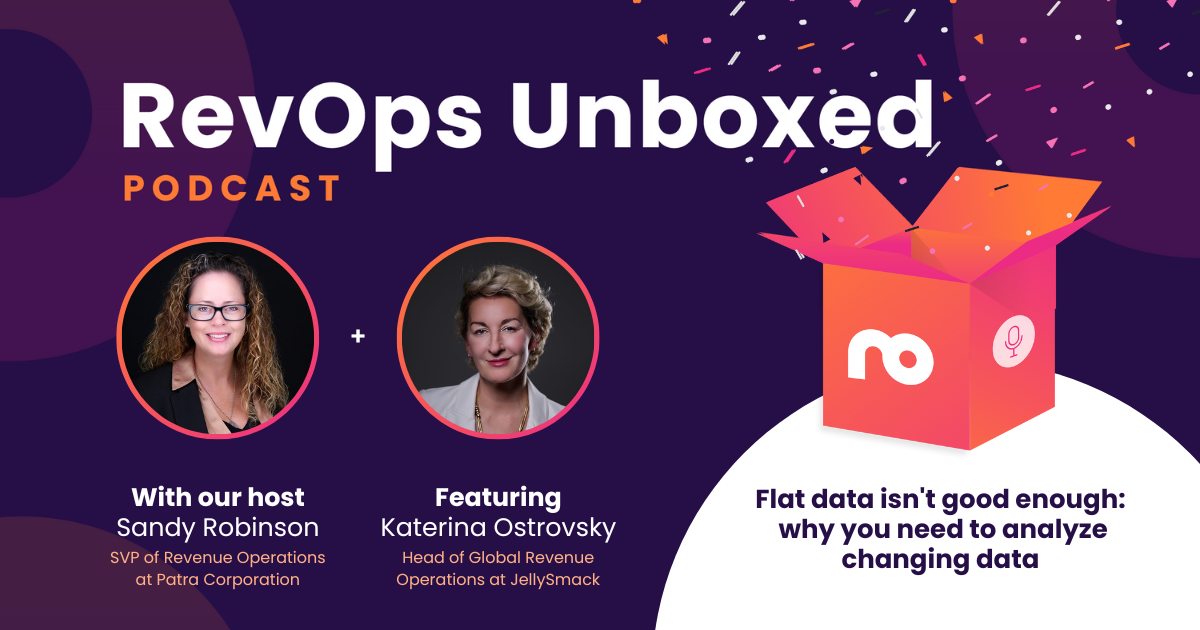Attention all revenue operations professionals!
Is your data not engaging your team or shareholders? Is it swamping your ability to deliver valuable insights? Look no further than the power of effective data visualizations.
In today's fast-paced business world, where data is king and RevOps is the future, raw numbers alone won't cut it, this is where data visualization comes in.
Not only can it transform your complex data sets into clear and concise visuals, but it can also tell a compelling story that drives action.
In this article, we'll cover everything you need to know about data visualization, from why it's important to how to build effective visuals, and how to persuade your team and management to take action.
Don't miss out on this opportunity for innovation and to elevate your revenue operations game. Read on and visualize your success today!
Here’s how we’ll break it down:
- What is data visualization and why is it important?
- How to build effective data visualizations
- Telling compelling stories with visualizations
- Final thoughts
What is data visualization and why is it important?
Simply, data visualization refers to the graphical representation of data and information.
In revenue operations, data visualization is used to present complex data in a more intuitive and understandable format. This enables RevOps professionals to easily identify trends, patterns, and outliers that may be difficult to spot in raw data.
Businesses that implement revenue operations see 19% faster growth and 15% more profits than those that don’t, and data is the fuel for this, so harnessing it effectively is crucial.
Compelling data visualization is key to helping RevOps professionals make better, objective, data-driven decisions.
But if it isn’t presented clearly and visually, it can be impossible to understand, especially in the world of RevOps which deals with multiple teams and datasets at the same time.

Along the same lines, when dealing with a vast range of data sets and metrics across departments, data visualization can aid revenue operations by identifying patterns and trends, helping to guide the direction of growth tactics.
Seeing what is working well and what isn’t can also benefit future forecasting.
When the data is clearly laid out and you have identified patterns, you can use this framework for analyzing previous years, building a bigger picture, and helping to focus on goals.
Another hugely important use of data visualization in RevOps is its ability to make data accessible.
Communication is an essential part of the RevOps function and so data should be able to clearly share insights and key information to all departments, shareholders, and directors.
With better communication, understanding, and alignment comes better results and growth.

How to build effective data visualizations
So how can you actually build effective revenue operations data visualizations? Consider the following steps:
- Determine the purpose and audience: Before creating any data visualization, it’s important to determine the purpose of the visualization and the intended audience. This will help guide decisions about which data to include, the type of visualization to use, and how to present the information.
- Choose the right type of visualization: There are many types of data visualizations, including charts, graphs, infographics, and dashboards. Choose the type that works best with your industry and the type of data you’re presenting, making it easier for your audience to understand the information.
- Simplify the data: Complex data can be difficult to interpret, so it’s important to simplify the data before creating a visualization. Remove any unnecessary data points, and use labels and annotations to highlight any key parts.
- Use appropriate colors and fonts: Choose colors and fonts that are easy to read and that make the data clear. Avoid using too many different colors or fonts, as this can make the visualization confusing, and always aim to keep color themes professional.
- Test the visualization: Before presenting the visualization to your team or your board of directors, test it to ensure that it accurately represents the data and that it effectively communicates the message or information you want to show.
If you can nail all of these steps, communicating complex key information in a way that is easy to understand, your data visualizations are on track to boost your revenue operations function and drive overall growth.

Telling compelling stories with visualizations
Data visualization bridges data analysis with compelling storytelling. We’ve looked at how it can help with analysis, and now let’s look at how it can boost your narrative message.
Presenting your data in a way that tells a clear and engaging story is crucial for persuading your audience to take action and further highlight key points. Here are some tips:
You should start with a clear message, before even creating a data visualization, you need to determine the key message behind the data you want to convey.
By doing this you can guide your decisions for selecting the right data and the right way to present it to make it most effective.
Try to use a narrative structure, to make your data visualization more engaging, build a story, set the scene, present the data, and conclude by summarizing your key message.
Make an attempt to include visual cues, like color or size for example that will draw your audience's attention to the parts you want them to see, or even annotations.
Highlight your most important data points strategically in this way, to engage and help your audience understand whilst trying not to overwhelm.
Providing context is also important to help your audience understand the full picture of the data, you can do this by including benchmarks or historical data. This can then highlight the DNA of the data for your audience and show patterns of improvement or decline.
Boost your storytelling with your data visualizations, and use real-world examples or case studies to illustrate the impact of the data on the business.
Cementing all these steps with a final call to action will really encourage your audience, whether that’s your team, shareholders, or board of directors, to take action.
This could range from anything to implementing a new strategy, increasing resources, or changing a process.
Regardless, by using data visualizations in revenue operations to show data in a way that is easy to understand and by illustrating the potential impact of taking action, you can persuade your audience to make informed decisions that drive business success.

Final thoughts
Data lies at the heart of revenue operations and any business growth, so harnessing it effectively is hugely important to secure success.
Therefore effective data visualization is a crucial tool for any revenue operations professional and by transforming datasets into actionable, clear, and concise visuals, trends, patterns, and outliers can be quickly identified.
For a function so focused on alignment and streamlining, compelling data visualizations only act to boost RevOps, helping you to make better, objective, data-driven decisions.
By following the steps outlined in this article, and even using the help of data visualization software like Tableau, you can build effective data visualizations that tell a clear and engaging story and persuade your audience to take action based on the valuable data insights.
This stands only to secure better outcomes, drive business and optimize revenue growth. RevOps success is yours for the taking!
So don't miss out on the opportunity for innovation and gain further insight today on our courses! 👇

Want to learn more about this? Hear what Hannah O’Meara, Senior Manager, Revenue Operations at Tripadvisor had to tell us here.





